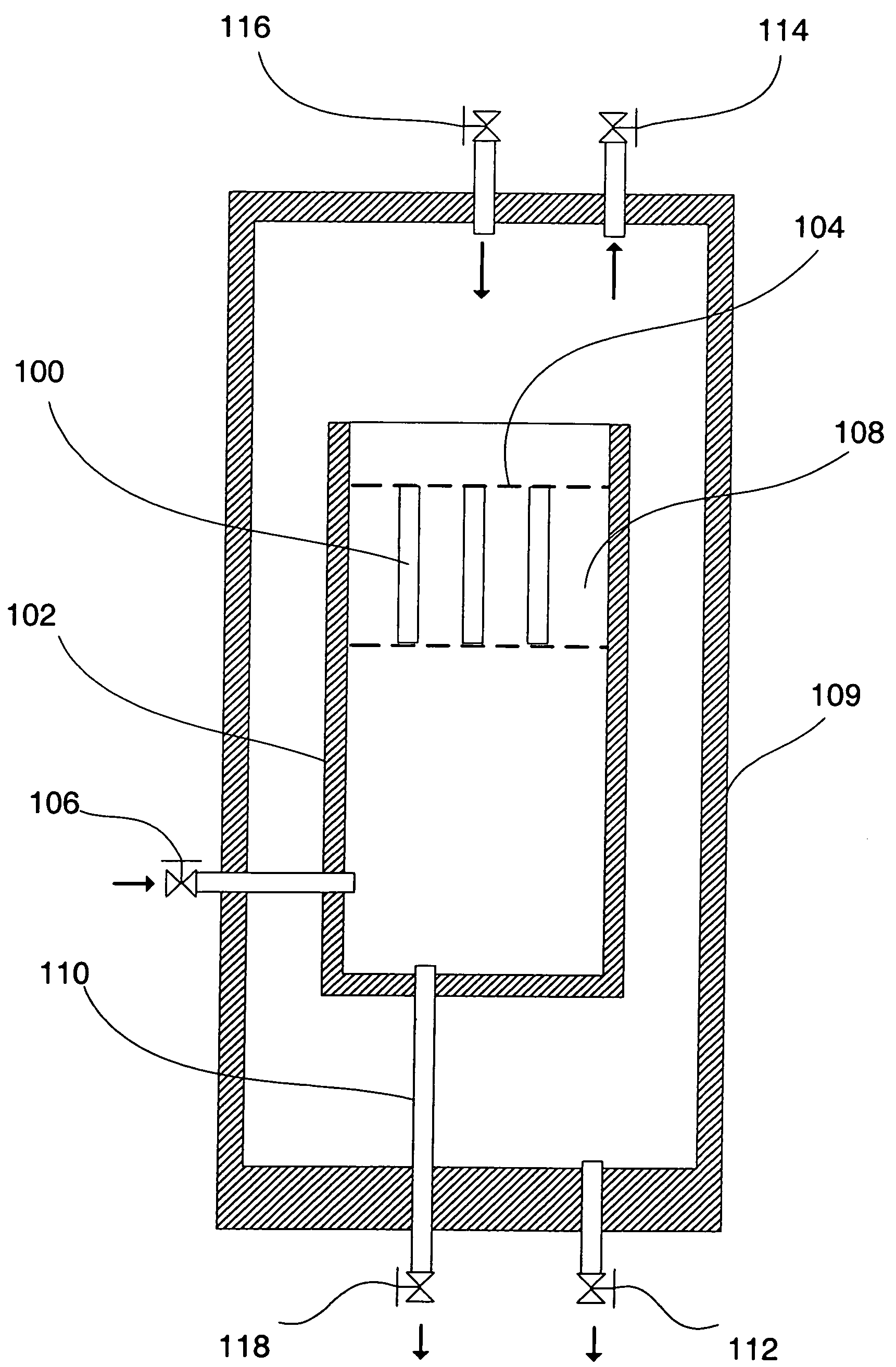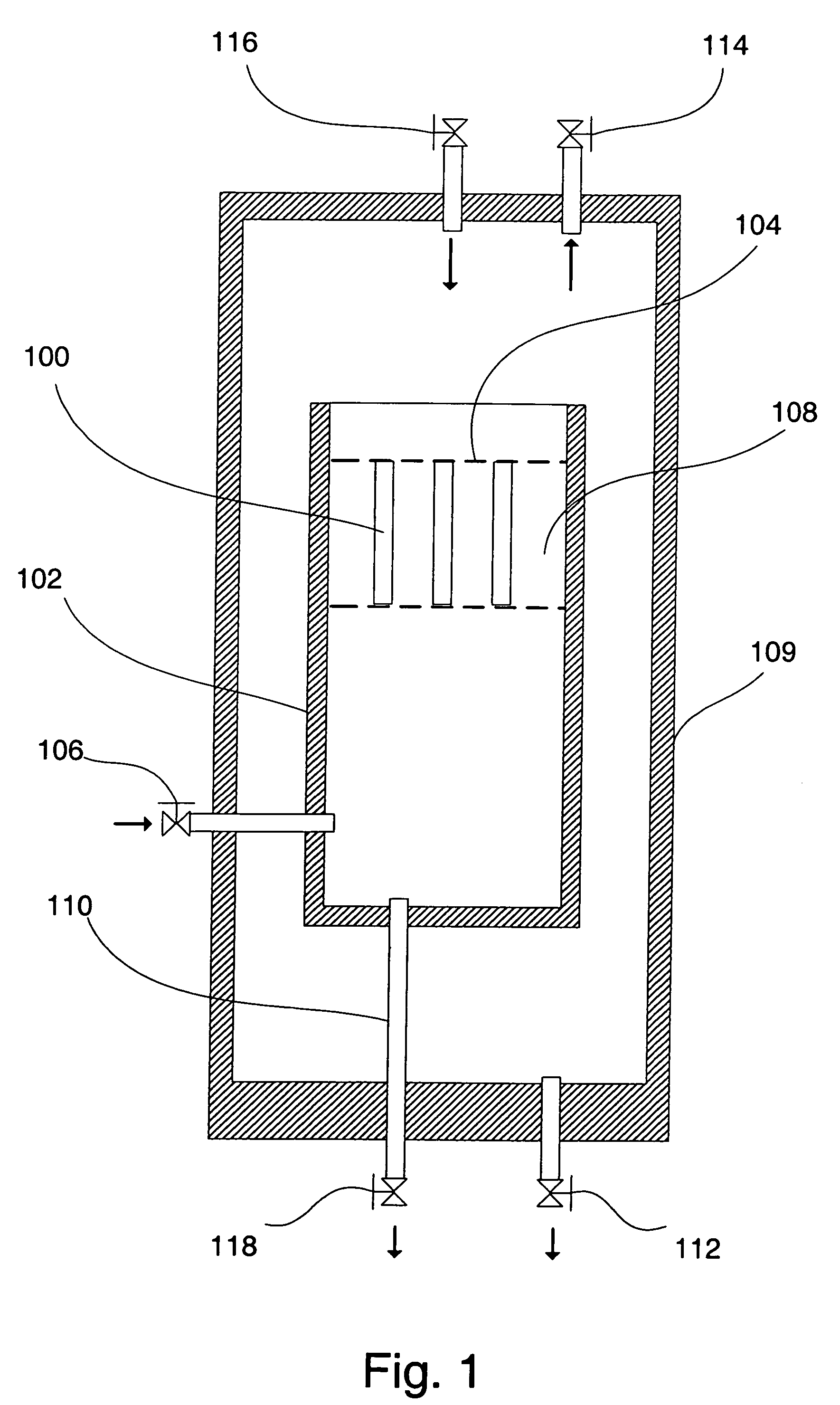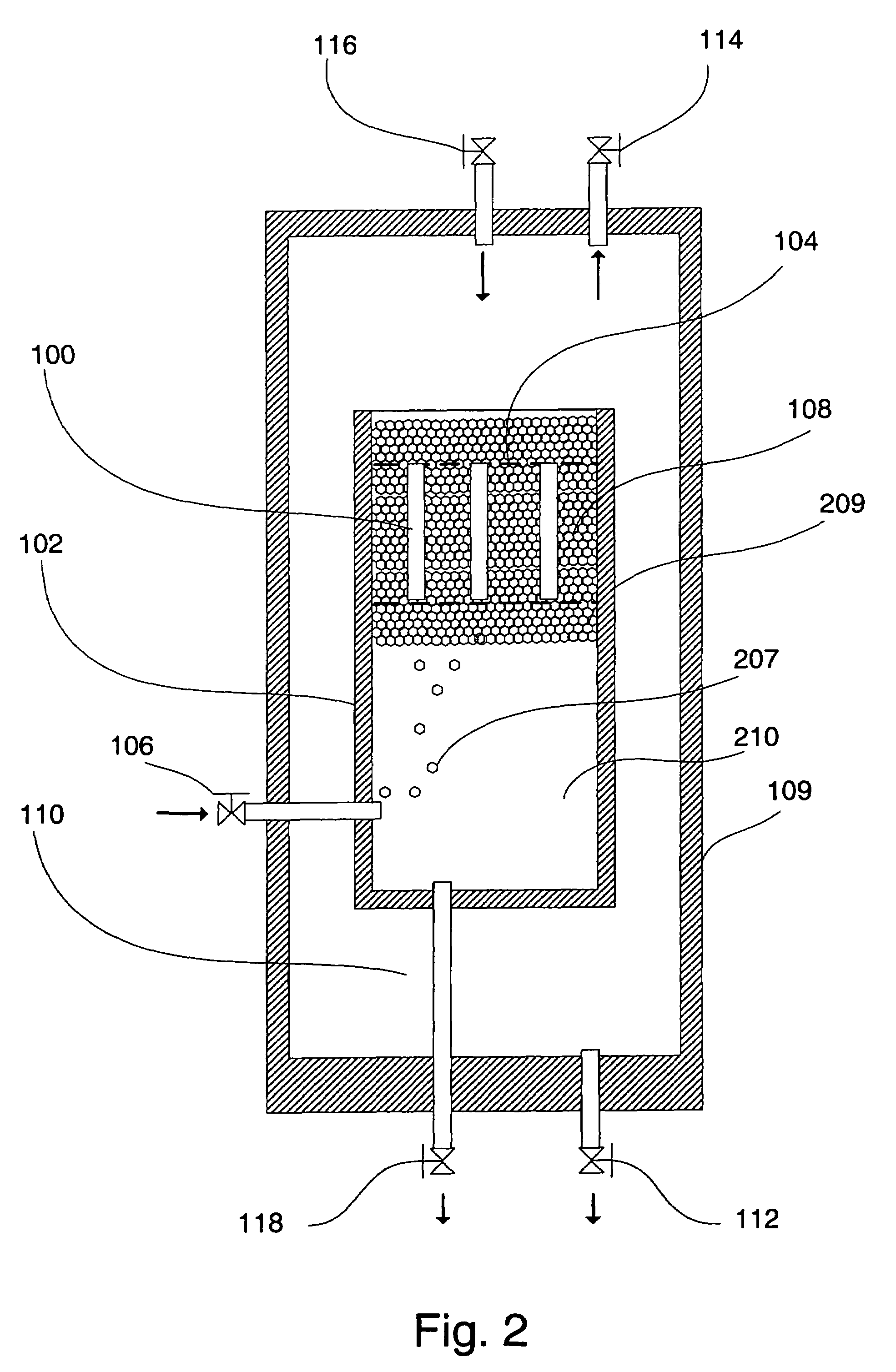Methods for chemically treating a substrate using foam technology
a technology of chemical treatment and substrate, applied in the direction of detergent compounding agents, cleaning using liquids, instruments, etc., can solve the problems of reducing the ultimate product performance, affecting the manufacturing process, and forming post-etch residues (per), so as to reduce undesired oxidation reactions, prevent adsorption and readsorption of metals, and increase safety
- Summary
- Abstract
- Description
- Claims
- Application Information
AI Technical Summary
Benefits of technology
Problems solved by technology
Method used
Image
Examples
example 1
Fluoride-based Compositions in Cleaning
[0118]Liquid phase cleaning of a substrate was compared to foam phase cleaning. The cleaning chemical concentration was the same in both the liquid and foam experiments. Two different proprietary wafers were used in these cleaning experiments. Each wafer surface was contaminated with post-etch residue from the previous removal process. The wafers were designated T and S. Two surfactants were used to make the compositions foamable: a sodium salt of dodecylbenzene sulfonic acid (anionic surfactant, obtained from Aldrich Chemical Co, Milwaukee, Wis.) and NCW601A (nonionic surfactant, obtained from Waco Chemical, Richmond, Va.).
[0119]The liquid phase cleaning experiments involved suspending a wafer fragment in a 100 cm3 beaker and stirring the cleaning composition magnetically at room temperature and pressure for a designated time. The foam phase cleaning experiments involved suspending a wafer fragment in a tall cylindrical vessel equipped with a ...
example 2
Hydroxylamine Based Compositions
[0127]Table 3 provides examples chemical formulations capable of foaming with surfactants with each component expressed in weight percent prior to addition of surfactant.
[0128]
TABLE 3Some HDA Cleaning Formulations Capable of Foaming2-methylamineGallicHydroxylamineDiglycol amineDIethanol (MAE)CatecholAcidFormulawt %wt %wt %wt %wt %wt %D35605E3055510F3027.5527.510G264817.58.5Formulations D, E, F and G additionally contain an amount of a surfactant sufficient to ensure foaming at desired operating temperatures.
example 3
Copper-compatible Chemistries
[0129]Some copper compatible cleaning formulations that are capable of foaming, along with variations in those formulations are provided in the Tables 4 and 5.
[0130]
TABLE 4Some Copper Compatible Cleaning Formulationsfor Use in Foaming-based CleaningTempTimeFormulaComposition / Weight %(C.)(min)H40-60% morpholine, 20-50% N-methyl45-855-60pyrrolidone, 5-25% γ-butylolactoneI5-45% choline, 1-10% hydroxylamine,35-855-6060-90% deionized waterJ1-10% 2-methylamine ethanol, 20-50%45-1055-60N-methyl pyrrolidone, 50-90% dimethylsulfoxideK10-50% choline, 20-80% propylene35-855-60glycol, ~25% deionized water.It is noted that formulations H and J in Table 4 do not have deionized water in them. All of formulations H through J additionally contain an amount of a surfactant sufficient to ensure foaming.
[0131]
TABLE 5Other Copper Compatible Cleaning Formulations for Use in Foaming Technologies.TABLE 5AHWeight %EXISTINGOTHERSamine40-60morpholinemonoethanolamine, diglycol amin...
PUM
| Property | Measurement | Unit |
|---|---|---|
| weight percent | aaaaa | aaaaa |
| operating temperatures | aaaaa | aaaaa |
| temperatures | aaaaa | aaaaa |
Abstract
Description
Claims
Application Information
 Login to View More
Login to View More - R&D
- Intellectual Property
- Life Sciences
- Materials
- Tech Scout
- Unparalleled Data Quality
- Higher Quality Content
- 60% Fewer Hallucinations
Browse by: Latest US Patents, China's latest patents, Technical Efficacy Thesaurus, Application Domain, Technology Topic, Popular Technical Reports.
© 2025 PatSnap. All rights reserved.Legal|Privacy policy|Modern Slavery Act Transparency Statement|Sitemap|About US| Contact US: help@patsnap.com



